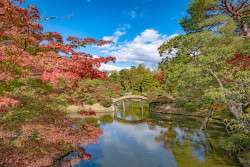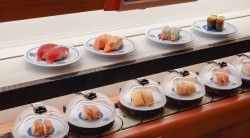
July 3, 2009
Vietnam
The south-east Asian country is becoming a beach paradise to die for
By Metropolis
Originally published on metropolis.co.jp on July 2009

Sunrise at Furama Resort Danang. Photo courtesy of Furama Resort Danang
The GIs sarcastically dubbed it China Beach: an idyllic 30km stretch of white sand to the south of Da Nang, Vietnam’s third largest city. During the late ’60s, American troops would take breaks here in between bouts of some of the fiercest fighting of the Vietnam War.
Four decades on, the area is providing R&R to an altogether different sort of clientele. It was here that Vietnam’s first five-star beach resort, Furama, opened in 1997, as the country cautiously began to welcome overseas investment. Today, the coastline is dotted with luxury developments, including a Hyatt Regency that’s due to open in 2011. It’s becoming an increasingly attractive destination for high-end beach bums who find the pleasures of nearby Thailand or the Philippines a little overbaked.

Open bathroom at Six Senses Hideaway Photo: James Hadfield
If your idea of a perfect holiday involves lazy poolside massages and languid dips in the ocean, it would be hard to top Furama. With colonial-style architecture and flawless service, it’s a welcoming and mercifully unpretentious place. The hotel is in the process of expanding its already sizeable premises, so now would be the best time to go—while it’s still got a measure of intimacy and, more importantly, still has the whole beach to itself.
If you’re venturing out, Da Nang is within striking distance of a number of UNESCO World Heritage sites. The ruined temples of My Son, 60km away, date from the 4th to 13th centuries and provide a lasting reminder of the Champa kingdom that once ruled this part of the country. Though they lack the grandeur of Cambodia’s Ang Kor Wat, many of the structures are—as our guide is keen to point out—much older. Ironically, their dilapidated condition today owes not so much to the ravages of time as to US bombing during the war, when the complex was used as a base by Viet Cong forces.

View from the Six Senses Hideaway Ninh Van Bay presidential suite. Photo: James Hadfield
A more compelling attraction, perhaps, is the beautifully preserved old town of Hoi An, 30km from Da Nang. A center of trade between the 15th and 19th centuries, it was frequented by merchants from China, Japan, India and Holland, before a rapid decline in the area’s fortunes saw it become a little-trafficked backwater. This had the beneficial effect of ensuring the survival of much of its old architecture, which is a real hodgepodge of influences. Along with numerous Chinese-style buildings, there’s even a covered bridge, dubbed Nihombashi, which was built by the Japanese and is thought to date back to the early 17th century.
We stay at the nearby Nam Hai, a seriously upscale resort of individual beach and poolside villas that has garnered numerous plaudits since it opened two-and-a-half years ago. It’s certainly stunning to look at—especially the restaurant, created by Tokyo’s Design Studio Spin—but the rooms feel weirdly impractical, a real triumph of form over function.
The following day, a short flight takes us from Da Nang to Nha Trang, 570km to the south. Also popular with holidaying GIs during the war, it’s now well established as a tourist destination. The long parade of hotels lining the city’s seaboard brings to mind a Vietnamese answer to Atami, while the islands in the surrounding bay are extremely popular with snorkelers and scuba divers.

Massage session at Furama. Photo courtesy of Furama Resort Danang
After gorging on a seemingly endless lunch of seafood, we head out of town down a newly opened road that we find ourselves sharing with a herd of cattle. From there, a narrow track leads to the jetty for Six Senses Hideaway Ninh Van Bay, a resort so secluded it’s only accessible by a 20-minute boat ride. This is the kind of luxury we could learn to like. A collection of beach and hillside villas are dotted around a private bay, linked by tracks that guests are encouraged to navigate by bicycle. It lacks the hermetic stuffiness of most high-end resorts: each villa comes with traditional Vietnamese-style trappings, mosquito nets and enormous bathrooms that are open to the elements.
As we enjoy an early morning swim in the sea, all that’s missing is a beautiful companion to complete the picture. Well, at least we’ve got the honeymoon destination sorted—the rest is just details.
Vietnam Airlines (www.vietnamairlines.com) flies from Tokyo to Ho Chi Minh City and Hanoi, from which it is a short connecting flight to Da Nang or Nha Trang. Furama Resort Danang (rooms for two from $240 per night, special offers available at www.furamavietnam.com) and The Nam Hai (villas from $600 per night [web only], www.thenamhai.com) are two of the more luxurious options in the Hoi An area, though there is also no shortage of budget accommodation. In Nha Trang, honeymooners and bon vivants can’t go wrong with the Six Senses Hideaway Ninh Van Bay (villas from $861 per night, special offers available at www.sixsenses.com/Six-Senses-Hideaway-Ninh-Van-Bay).

Riverside in Hoi An. Photo: James Hadfield







